Recently Added Document
- Passing on the Polio legacy- Social Mobilization Network Deployment to new locations
- Guidelines for the use of the Communication kit for the tOPV to bOPV SWITCH
- tOPV to bOPV SWITCH FAQs for Cold Chain Handlers and ANMs-English
- tOPV to bOPV FAQs for Cold Chain Handlers and ANMs-Hindi
- tOPV to bOPV SWITCH Fact Sheet-English
- tOPV to bOPV SWITCH Fact Sheet-Hindi
- tOPV to bOPV SWITCH Segregation Tape-Bilingual
- tOPV to bOPV SWITCH job aid for Cold Chain Points-English
- tOPV to bOPV SWITCH job aid for Cold Chain Points-Hindi
- tOPV to bOPV Poster for Cold Chain Points-English
- tOPV to bOPV Poster for Cold Chain Points-Hindi
- E-Brochure: Before the tOPV to bOPV SWITCH
- E-Brochure: After the tOPV to bOPV SWITCH
- SMSes for tOPV to bOPV SWITCH
History of Polio
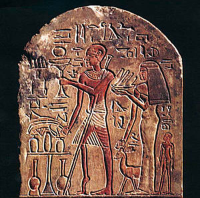
What is polio?
Transmitted via the faecal-oral route, poliovirus invades the central nervous system and as it multiplies, destroys the nerve cells that activate muscles,
causing irreversible paralysis in hours. Of those paralysed, 5-10% die when their breathing muscles become immobilized.
There is no cure for polio, but there are safe, effective vaccines which, given multiple times, protect a child for life. If sufficient numbers are immunized against polio, the virus is unable to find susceptible children to infect, and dies out.
There is no cure for polio, but there are safe, effective vaccines which, given multiple times, protect a child for life. If sufficient numbers are immunized against polio, the virus is unable to find susceptible children to infect, and dies out.
It is likely that polio has caused paralysis and death for most of human history. The oldest clearly identifiable reference to polio is an
Egyptian stele (pictured), depicting a man with a withered leg, leaning on a staff, which is more than 3,000 years old.
By the time of the Great Depression, polio was perhaps the most feared disease on the planet. Epidemics were reported annually and in 1952,
polio reached a peak in the United States, with more than 21,000 cases reported.
US President Franklin Roosevelt declared a War on Polio during his administration, launching the March of Dimes campaign to develop a vaccine.
In 1955, the campaign bore fruit when Dr Jonas Salk developed the first vaccine against polio – an injectable, inactivated polio vaccine.
In 1961, Dr Albert Sabin developed a "live" oral polio vaccine (OPV) which rapidly became the vaccine of choice for most national immunization
programmes globally.
Following the success of smallpox eradication in 1977, Rotary International launched its ambitious dream to eradicate
polio in 1985. PolioPlus was born - the first and largest internationally coordinated private-sector support of a public health initiative.
In 1988, the World Health Assembly voted to launch the Global Polio Eradication Initiative (GPEI). At that time, wild poliovirus was endemic in
125 countries, paralyzing more than 1000 children every day. Today, indigenous polio has been eliminated from all but three countries - Afghanistan, Nigeria
and Pakistan.
The GPEI, spearheaded by national governments, WHO, Rotary International, CDC and UNICEF, is the largest public health initiative the world has
known. Since 1988, some two billion children have been immunized against polio thanks to the cooperation of more than 200 countries and 20 million
volunteers, backed by an investment of US$ 3 billion.
-
1988
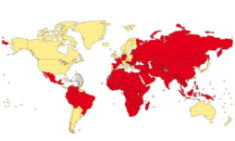 When the World Health Assembly passes its resolution to eradicate polio, the disease is endemic in 125 countries. Over the next 25 years, more than 2.5 billion children will be immunized against polio by more than 20 million volunteers, backed by an international investment of more than US$8 billion.
When the World Health Assembly passes its resolution to eradicate polio, the disease is endemic in 125 countries. Over the next 25 years, more than 2.5 billion children will be immunized against polio by more than 20 million volunteers, backed by an international investment of more than US$8 billion. -
1994
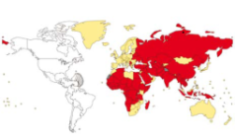 The Americas are certified polio-free by the International Commission for the Certification of Polio Eradication. Most of Europe is now polio-free.
The Americas are certified polio-free by the International Commission for the Certification of Polio Eradication. Most of Europe is now polio-free. -
1995
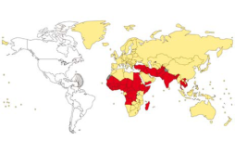 Eastern Europe and most of central and south-east Asia is no longer polio-endemic.
Eastern Europe and most of central and south-east Asia is no longer polio-endemic. -
2000
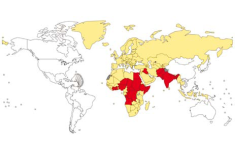 The 37 countries and territories of the WHO Western Pacific Region (WPR) are certified polio-free, the second WHO Region to be certified polio-free. With Turkey having stopped transmission, all of Europe is no longer polioendemic.
The 37 countries and territories of the WHO Western Pacific Region (WPR) are certified polio-free, the second WHO Region to be certified polio-free. With Turkey having stopped transmission, all of Europe is no longer polioendemic. -
2003
 In June 2002, the WHO European Region is certified polio-free. Half of the world's population in 134 countries and territories now live in areas certified polio-free. Somalia passes a full calendar year without polio, joining Bangladesh, central Africa and the Horn of Africa in having stopped poliovirus transmission. By end-2003, only six countries in the world are still polio-endemic: Nigeria, Niger, India, Pakistan, Afghanistan and Egypt.
In June 2002, the WHO European Region is certified polio-free. Half of the world's population in 134 countries and territories now live in areas certified polio-free. Somalia passes a full calendar year without polio, joining Bangladesh, central Africa and the Horn of Africa in having stopped poliovirus transmission. By end-2003, only six countries in the world are still polio-endemic: Nigeria, Niger, India, Pakistan, Afghanistan and Egypt. -
2006
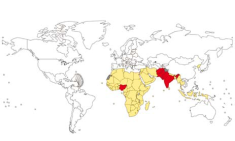 Niger and Egypt pass one year without cases, leaving four countries still endemic: India, Pakistan, Afghanistan and Nigeria.
Niger and Egypt pass one year without cases, leaving four countries still endemic: India, Pakistan, Afghanistan and Nigeria. -
2012
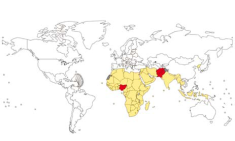 India records one year without any cases, paving the way for regional certification of the South East Asian Region in 2014 if India, and its south-east Asian neighbours can remain polio-free. Only Pakistan, Afghanistan and Nigeria remain endemic.
India records one year without any cases, paving the way for regional certification of the South East Asian Region in 2014 if India, and its south-east Asian neighbours can remain polio-free. Only Pakistan, Afghanistan and Nigeria remain endemic.

